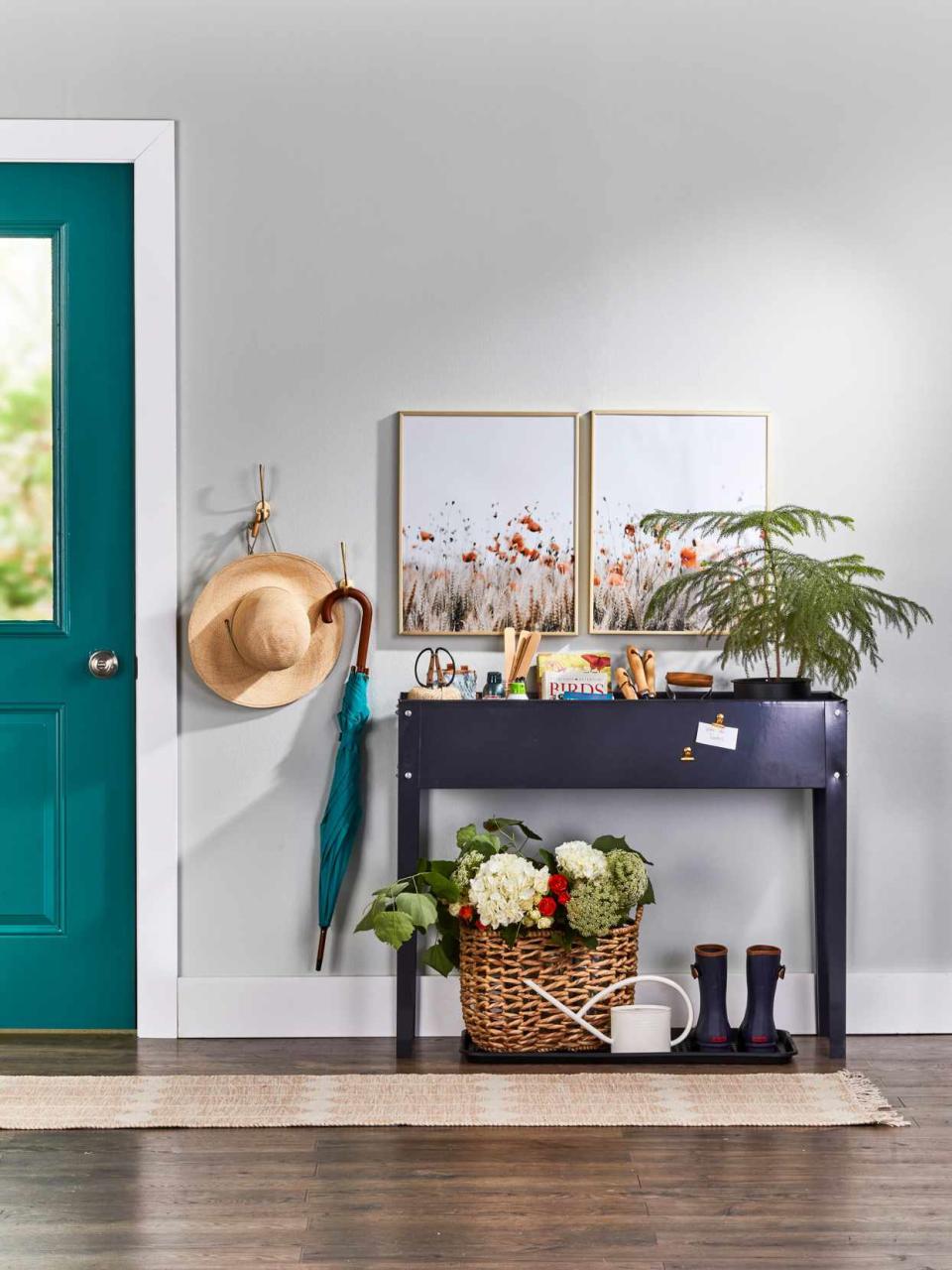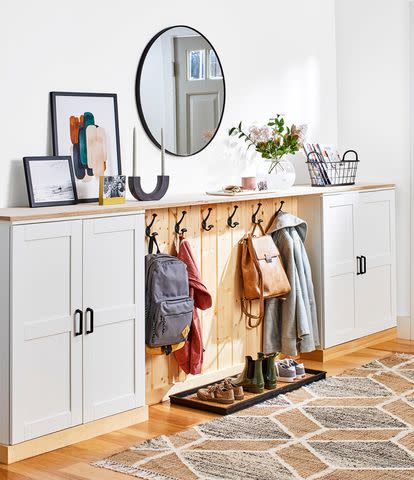11 Must-Know Tips for Organizing an Entryway
Create a seamless daily routine and make a good first impression with guests using these easy entryway organization ideas.

Because the entryway is the first thing you see when walking into a house, and the last thing you see before you leave, it's particularly important to keep it tidy. And since the area looks different in every home, there's no right or wrong way to design an entryway as long as you have a good organizing system in place. Whether you have a narrow hallway or a broad foyer, these organizing tips will help you create a functional entryway that works for your household.
The ultimate goal is to create a designated drop zone to collect the things you need on an everyday basis, while also considering your design style and any size constraints. Here, you’ll find a step-by-step plan to establish an organized entryway and revamp your existing space into something more functional for the whole family.
Related: 9 Entryway Storage Ideas for a Clutter-Free Home

Define the Entryway
If you’re starting from scratch, you’ll want to first decide on where the entryway should stand. In smaller spaces, this will be obvious as there’s only one available area to place it. But if you have options, go with what makes the most sense for your lifestyle. For example, does it make the most sense right next to the front door, or would you rather keep it off to one side? Especially if you have a larger space, define where the entryway will be and set a clear boundary so your things will stay centrally contained. For example, if you set up a small entry table with storage bins, you'll know the rest of the foyer area is off-limits for bags, backpacks, and unsorted mail.
Related: 18 Stealthy Ways to Fake an Entryway in a Tight Space
Declutter the Entryway
If your current entryway is overflowing with solo shoes, excess shopping bags, and miscellaneous paperwork, address this next. Pull everything out and sort items into categories, tossing or donating what you no longer need or want along the way. Return anything that doesn't belong in this area, such as stray toys or shoes. Then, it’s time to establish what actually needs to be stored in the entryway.
Determine Entryway Categories
Once you've cleared the clutter, it's time to decide what stays—and how you're going to organize it. Make a list of things that would be most helpful to have right by the front door for easy access as you come and go. Some common categories are:
Grab and go items including keys, sunglasses, wallets, and umbrellas
Shoes
Bags including purses, backpacks, and reusable shopping bags
Accessories including hats, gloves, and scarves
Command center items including mail, memos, and schoolwork
Pet supplies
Personal care items including sunscreen, sanitizer, and bug spray
Once you have your essentials checklist, choose the organizing tips below that best suit your needs. Do keep in mind, however, that the size of the space you’re working with might dictate what’s feasible. While you might like the idea of a comprehensive family command center by the entrance, if it’s too tight, consider placing it in the kitchen instead.

Related: 8 Essential Items Every Entryway Needs
Entryway Organization Ideas
As a professional organizer, these are the organization ideas I recommend for the entryway. Choose a combination of organizing solutions from this list that fit your space and storage needs. Creating an entryway system that works for your household will help you keep the area organized even on the busiest of days.
1. Opt for a Slim Console
One of the most popular options for entryway storage is a console table, because they don’t take up too much floor space but can hold a considerable amount of items. Choose one with drawers and cabinets to conceal clutter, or add matching baskets to open shelves and keep similar items contained within them. This will keep your things sorted and easy to find while simultaneously preventing visual clutter.
Related: The 13 Best Storage Containers of 2023
2. Utilize a Shoe Cabinet
If shoes tend to pile up by your front door, consider a closed shoe cabinet. They pull down to reveal room for dozens of pairs that will no longer be strewn across the floor. Plus, the top surface can serve the same function as a slim console table, or something more functional like a drop zone.

3. Float Shelves or Baskets Above Hooks
For narrow entryways, focus on using vertical space as much as possible. Hang a floating shelf and add labeled baskets for various categories. Or, use matching wall-mounted baskets to get the same result. Underneath either option, install a row of hooks for keys, bags, hats, and pet leashes.
4. Corral Grab-and-Go Items
Finding the best place to store small items is crucial because they’re usually the most important. A pretty tray or basket placed on a console or cabinet countertop is a simple spot for things like keys and sunglasses, so you always know where they are even when you’re in a rush to get out the door. If you decide to go this route, be sure to get into the habit of always putting them back when you walk in the door so that this quickly becomes their permanent home.
5. Maximize Space with a Hall Tree
A hall tree might be the ultimate entryway organizer because it’s an all-in-one piece of furniture that will keep everything organized. They come in a variety of sizes so measure the width, depth, and height of your entryway and choose one that fits. Then, simply use the built-in hooks, drawers, and baskets to sort your things.

6. Add a Bench
If you have enough floor space, bring in a bench and place it directly below the hooks. If you're the DIY type, consider building one with storage so you can keep shoes or accessories organized and have a place to sit while pulling layers on and off.
Related: 21 Ways to Use a Storage Bench for All Your Organization Needs
7. Use a Shoe Rack, Boot Tray, or Basket
Some people prefer to keep shoes to a minimum by the front door. If that’s the case in your home, choose a subtle entryway shoe organizer. Use a tray to collect messy boots during the colder months or a simple rack that holds a few pairs of everyday shoes. Another option, which is especially convenient for the little ones, is to have a basket for them to toss their shoes into at the end of the day. This will keep them within reach but off the floor.
Related: Our Best Shoe Storage Ideas for Your Closet, Entryway, and More
8. Include a Pegboard
Create a consolidated command center by using a pegboard. This versatile entryway wall organizer can be customized to accommodate your needs, even as they change. Arrange attachments like hooks, baskets, and ledges wherever you’d like to hold items like incoming and outgoing mail, an umbrella, and your favorite pair of sunnies.
For more Better Homes & Gardens news, make sure to sign up for our newsletter!
Read the original article on Better Homes & Gardens.

